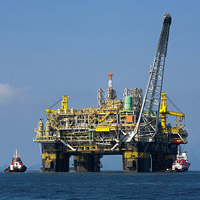With huge hydrocarbon finds being unearthed in both conventional and unconventional sectors across the Americas, energy independence is being hyped to epic proportions in the United States. The scorecard now shows 6.5 trillion unconventional barrels of oil in the Americas, running from Canada all the way to Argentina, versus 1.2 trillion conventional barrels in the Middle East and North Africa. The U.S. and Brazil sit comfortably in the middle of the expected windfall, and even Mexico, long lost to the annals of hydrocarbon blunders, boasts major new unconventional reserves.
Given the awesome scale of these figures, it is hardly surprising that explosive geopolitical conclusions are being drawn: The U.S. can declare energy independence; import dependency is practically gone. The deficit can be fixed; dollars will stay in the U.S. rather than filling OPEC’s coffers. Oil will flow between the north and south rather than the east and west. It’s “American oil for American consumers at American prices,” and U.S. superpower status can be maintained far into the 22nd century.
This attitude recalls the classic sign hanging above British pubs, “Free beer tomorrow,” as much of this production will not come online until the 2020s or even the 2030s. These resources may well make it to market one day, assuming the figures are accurate. But the blunt reality is that over the next decade, OPEC’s market share is going to rise above historical highs of 50 percent, translating into more than 80 percent of proven reserves that will invariably provide cheaper marginal barrels than dirtier unconventional grades.

